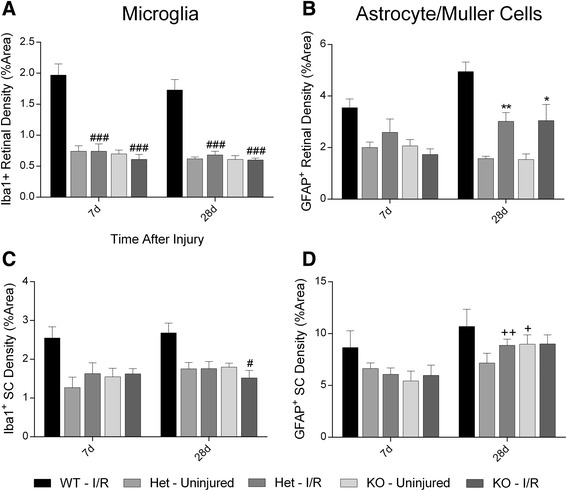Fig. 8.

C1qa-deficiency modulates the reactive microglial but not astrocyte response in the retina and SC. a, b Bar graphs display density of Iba1+ microglia (a) or GFAP+ (b) cells in the retina at both 7 and 28 days post injury. No statistical changes between uninjured or injured C1qa +/− or C1qa −/− mice were observed in microglia density at any time point measured; however, there was a statistically significant decrease compared with WT retinal microglia (p < 0.001). On day 28 there was significant difference in GFAP+ cell density (p < 0.05) between ischemic and uninjured retinas of C1qa +/− and C1qa −/− mice. c, d Bar graphs demonstrating glial cell density in the SC of C1qa-deficient mice. (c) Microglial density was unchanged in both the ischemic-receiving and uninjured ipsilateral hemisphere at both 7 and 28 days, and C1qa −/− displayed significant decrease compared to peak microglial density at day 28 (p < 0.05). (d) No differences were determined between hemispheres on day 7 or 28 in astrocyte density, but there was a significant increase in density on day 28 when compared to day 7 in C1qa +/− (p < 0.01) and C1qa −/− (p < 0.05) mice. No statistical differences were measured when C1qa-deficicient were compared to peak WT astrogliosis density. Mean ± SEM, n = 6 per group. *p < 0.05 **p < 0.01 compared to uninjured control determined by student’s paired t-test. +p < 0.05 ++p < 0.01 compared across time points within a group determined by student’s t-test. #p < 0.05, ###p < 0.001 compared to glial cell density of I/R injured retinas of WT mice, determined by One-way ANOVA followed by Holm-Sidak post test
